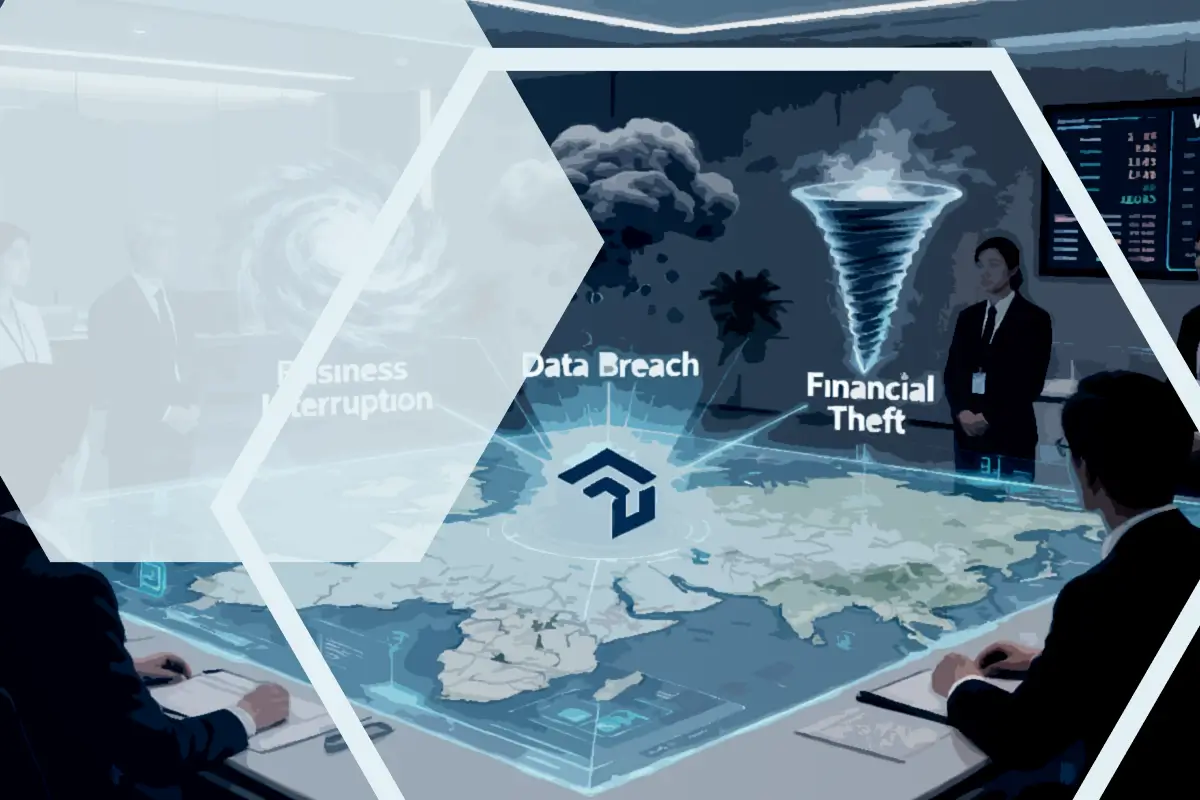As cyber threats become increasingly sophisticated and widespread, organizations are under immense pressure to safeguard their information assets. Chief Information Security Officers (CISOs) are leading the charge, tasked with defending against cyber attacks and reporting cyber risks and their importance to their board of directors.
Effective communication between CISOs and the board is paramount for aligning cybersecurity initiatives with overall business objectives. A recent study by Heidrick & Struggles underscores the evolving role of CISOs, noting a significant rise in their interactions with corporate boards as cybersecurity emerges as a crucial business concern.
This article explores the role of top-down cyber risk quantification in helping CISOs secure approval from the board for cybersecurity budgets and supporting cyber risk oversight. By the end of this article, you will understand how you can use top-down CRQ to gain support from your board and achieve strategic success.

Top-Down Cyber Risk Quantification (CRQ) Explained
A top-down cyber risk quantification (CRQ) approach involves identifying and prioritizing high-level business objectives at the company level before quantifying cyber risks based on their potential economic impact on these objectives. This approach begins by quantifying the current state of cyber risk at a company level and presenting it in various financial implications and probability scenarios. The results of this status quo quantification allow board members to compare these risk metrics with their business objectives. This helps them assess their current risk appetite and decide whether adjustments are necessary. These insights also support simulations and considerations for return on security investments (ROSI) for future information security improvement programs.
This detailed focus on the financial implications of cyber risk on business outcomes empowers the leadership and the board to align cybersecurity strategies with the organization’s broader objectives, facilitating executive oversight of cyber risks and enhancing enterprise-wide strategic decision-making.
How Does Top-Down Cyber Risk Quantification Benefit CISOs in Managing Cyber Risk?
A top-down approach to cyber risk quantification (CRQ) significantly improves strategic decision-making ability at the leadership and board levels by providing accurate data on the financial implications of cyber risks for different scenarios. They allow CISOs to compare cyber risks and their economic effects on the business and identify and prioritize the most essential cybersecurity initiatives.
For example, understanding how potential cyber attacks could impact the business for different scenarios, such as Business Interruption, Data Privacy Breach, Ransomware, or Financial Fraud and Theft, can help prioritize targeted mitigation strategies and effectively allocate resources to safeguard critical assets.
How Does Top-Down Cyber Risk Quantification Benefit CISOs Reporting Cyber Risk to the Board?
With a top-down approach to cyber risk quantification (CRQ), CISOs can shift the focus from intangible, technical cyber threats to clear quantifiable business consequences and easily understandable metrics to non-technical board members.
Converting cyber risk into financial metrics that are easily understandable by C-level executives helps board members understand the potential financial impact of cyber threats and how cybersecurity investments align with the company’s objectives. This, in turn, assists CISOs in making a strong case for cybersecurity investments to the board of directors. As a result, CISOs can more effectively request budget approvals and justify their investment choices.
A report by Proofpoint at Cyentia Institute confirms that translating technical cyber risks into business-relevant information makes it easier for non-technical stakeholders to understand and support cybersecurity initiatives. It affirms that board members are more open to cybersecurity initiatives and investments when they clearly understand the direct link between cyber risk and the company’s financial health.
Overall, top-down cyber risk quantification offers clear and easy-to-understand results on the economic impact of cyber risk. These non-technical insights enable CISOs to effectively communicate with the board and gain faster support for critical cybersecurity measures, facilitating the implementation of required cybersecurity improvement programs.
How Squalify Can Help CISOs Secure Board Support for Cybersecurity Initiatives
Squalify’s top-down cyber risk quantification (CRQ) platform empowers CISOs to effectively communicate the value of cybersecurity initiatives to the board. Here’s how Squalify can help you secure board support for your cybersecurity initiatives:
1. Clear Presentation of Financial Impact of Cyber Risk Scenarios and Loss Drivers
Squalify calculates financial loss metrics and loss drivers for key cyber risk scenarios. This insight helps CISOs explain cyber risk in board language, justify their information security investment decisions, and contextualize the envisioned budget.


2. Predicting the Risk Reduction of Cybersecurity Initiatives
CISOs can use Squalify to simulate the financial risk reduction outcomes of planned cybersecurity improvement initiatives. When combined with the proposed investment costs, this can demonstrate the return on investment (ROI). Is the budget request being challenged? By quickly performing multiple simulations for different-sized improvement programs, CISOs can easily back their budget pitches with risk-informed data.

3. Easily Monitor Cyber Risk Across the Entire Organization
Squalify allows CISOs to evaluate, compare, and oversee the cybersecurity risk position throughout the entire organization and its individual units. Whether you are a global or regional CISO overseeing subsidiaries in different countries or a national CISO monitoring diverse business units, with Squalify’s platform, monitoring cyber risk across the entire organization becomes easy.

Final Words
The CISO’s role in making their voice heard and respected at the board level has never been more crucial. Securing the necessary budget and aligning cybersecurity investments with the company’s broader goals are essential steps to enhance security posture and ensure long-term resilience against evolving threats.
Taking a top-down approach to quantifying cyber risks allows CISOs to effectively communicate with the board by translating technical threats into business impacts. By calculating the financial implications of cyber risks for different consequence scenarios, including the likelihood and frequency of cyber threats, CISOs can compare these risks and their economic effects on the business. This methodology helps identify and prioritize the most essential cybersecurity initiatives and create a persuasive case for securing an investment decision from the board.
Squalify provides CISOs with the tools and insights to secure board support for cybersecurity initiatives. Our top-down cyber risk quantification (CRQ) platform delivers accurate data so you can correctly prioritize investments, demonstrate the economic benefits of existing and planned cybersecurity initiatives, and build a common language between CISOs and non-technical board members.









